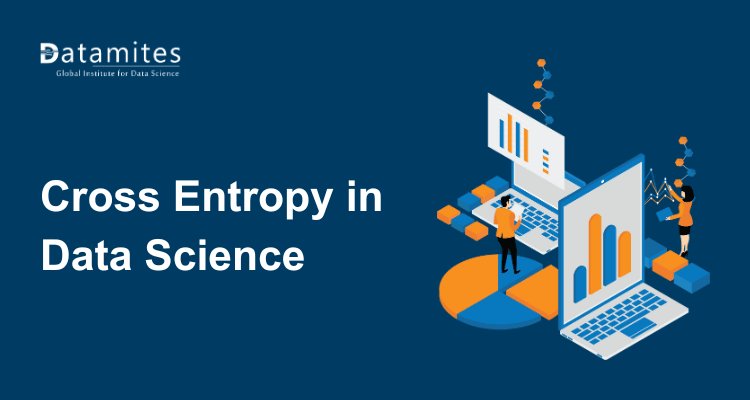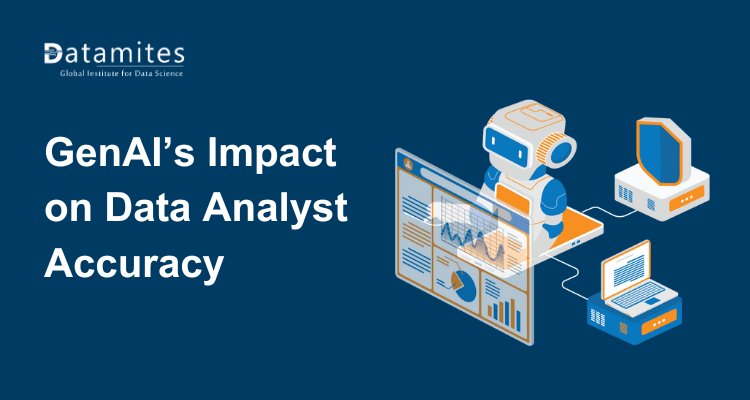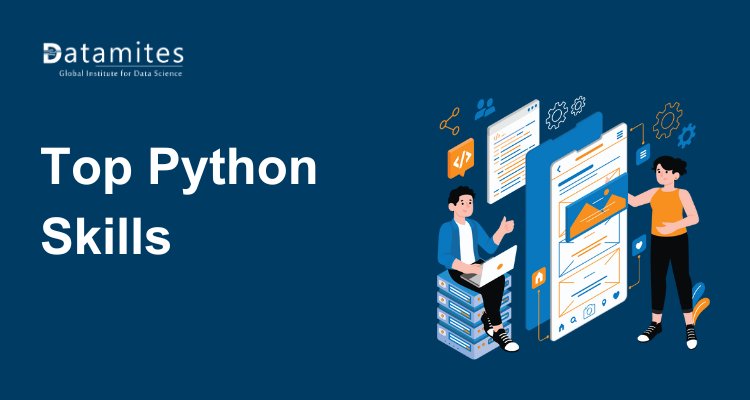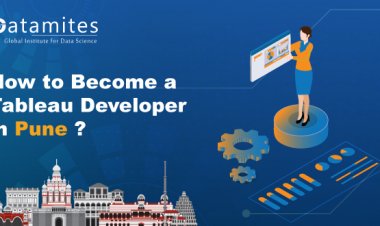Cross Entropy in Data Science: Concepts and Applications
Explore how Cross Entropy works in Data Science, its role as a key loss function in Machine Learning, and how it improves model accuracy through real-world applications and examples.

To master data science, you need to understand not just what models predict, but how they measure their own mistakes. That’s where Cross Entropy comes in. This concept acts like a mirror for machine learning models, showing how far their predicted probabilities are from reality. By using cross entropy as a loss function, models can continuously fine-tune themselves and get closer to accurate predictions.
As businesses rely more on data science algorithms to make smarter decisions, evaluate risks, and deliver personalized experiences, the importance of accurate model evaluation continues to rise. In fact, demand for Data Science and Machine Learning roles continues to accelerate One study shows that the role of a data scientist is projected to grow around 36% between 2021 and 2031 in the U.S. This rapid growth highlights how essential it is to understand core concepts like cross entropy, which lie at the heart of model optimization and real-world performance.
What is cross entropy in data science?
To understand cross entropy in data science, let’s first recall what “entropy” means. In simple terms, entropy is a measure of uncertainty or randomness in information theory. It tells us how unpredictable an event is. For example, flipping a fair coin has high uncertainty (entropy) because both outcomes, heads and tails, are equally likely.
Now, Cross Entropy builds upon this idea by comparing two probability distributions:
- The true distribution (actual labels or ground truth)
- The predicted distribution (probabilities predicted by the model)
When these two distributions are similar, the cross-entropy value is low, meaning the model’s predictions are accurate. If they are very different, the Cross Entropy is high, indicating poor performance.
Mathematically, for two probability distributions ppp (true) and qqq (predicted), Cross Entropy is defined as:
H(p, q) = -Σ p(x) log q(x)
In simpler words, it calculates how uncertain the model’s predictions are compared to the true values. For instance, if the true label for an image is “cat” and the model predicts 0.95 probability for “cat,” the Cross Entropy loss will be low. But if it predicts 0.2, the loss will be much higher.
Thus, Cross Entropy in machine learning serves as a crucial loss function that drives model optimization by reducing prediction uncertainty and aligning model outputs closer to actual results.
Why Cross Entropy is Used in Data Science
The primary reason Cross Entropy is widely used in Data Science is because it directly measures the distance between predicted and actual probabilities. This makes it extremely useful for classification problems, especially in logistic regression and neural networks.
When training a model, the goal is to minimize the Cross Entropy loss function. Minimizing this loss means that the model’s predicted probabilities are getting closer to the actual labels resulting in more accurate predictions.
For instance, in a binary classification problem (like predicting whether a customer will churn), Cross Entropy helps determine how confidently the model is making predictions. Models trained with Cross Entropy learn faster and perform better because they penalize incorrect predictions more strongly when the model is overly confident but wrong.
In short, Cross Entropy in Data Science ensures that models not only predict the correct class but also assign meaningful probability values, improving their reliability in real-world applications.
Refer to these articles:
- Binomial Distribution: A Beginner’s Guide for Data Science
- Box Plot in Data Science: How to Visualize Data Spread
- Covariance in Data Science: What It Means and Why It Matters
Applications of Cross Entropy in Data Science
Cross Entropy has widespread applications across various Data Science algorithms and fields. Here are some of the most common areas where it’s used:
Image Classification
In computer vision tasks, models like CNNs use the Cross Entropy loss function to compare predicted labels with true ones. By minimizing this loss, models become more accurate in identifying objects useful in facial recognition, autonomous driving, and medical imaging.
Natural Language Processing (NLP)
In NLP, Cross Entropy is essential for sentiment analysis, text generation, and machine translation. It measures how closely predicted words match the actual words, helping models like chatbots and translators produce more meaningful results.
Predictive Analytics
For classification tasks such as customer churn, fraud detection, or risk prediction, Cross Entropy helps models generate reliable probability scores. It ensures predictions are balanced and data-driven, improving decision-making.
Recommendation Systems
Platforms like Netflix and Amazon use Cross Entropy-based models to recommend content. The loss function compares predicted preferences with user behavior, improving personalization and engagement.
Real-World Decision Systems
From spam detection to credit scoring, Cross Entropy ensures that models confidently distinguish between categories, making them more dependable in real-time applications.
Across all these data science applications, Cross Entropy in machine learning helps improve model accuracy, stability, and generalization, making it a key part of every data scientist’s toolkit.
How Cross Entropy is Used in Real-World Data Science Scenarios
Cross Entropy is not just a theoretical concept; it’s widely implemented in industry data science tools and real-world applications. Popular frameworks like TensorFlow, PyTorch, and Keras use cross entropy as a built-in loss function for training classification models.
For example:
- Spam Detection: Email filters use models trained with Cross Entropy to classify emails as spam or legitimate.
- Recommendation Systems: Platforms like Netflix or Amazon rely on Cross Entropy-based models to suggest relevant content or products.
- Medical Diagnostics: AI models use Cross Entropy to predict disease risks based on patient data, improving diagnostic accuracy.
These examples show how understanding and applying Cross Entropy in Data Science can lead to practical, high-impact outcomes across industries.
Example: Cross Entropy in Action
Let’s consider a simple example:
Suppose we have a binary classification problem where the true label yyy is 1 (meaning “positive”). The model predicts a probability p=0.9p = 0.9p=0.9 for that class.
The cross-entropy loss is:
Loss = - [y log(p) + (1 - y) log(1 - p)]
Substitute the values:
Loss = - [1 × log(0.9) + 0 × log(0.1)] = 0.105
This low value means the model’s prediction is close to the actual result. If the model had predicted 0.1 instead, the loss would be much higher, around 2.3, indicating poor prediction accuracy.
This example demonstrates how cross entropy penalizes incorrect predictions and rewards accurate, confident ones.
Refer to these articles:
- The Role of Data Science in Protecting Cultural Heritage
- A Beginner’s Guide to Linear Programming for Data Science
- How Data Science Is Revolutionizing the Film Industry
Learning Cross Entropy Through Data Science Courses
Understanding cross entropy and other loss functions in data science is essential for anyone aiming to build a strong foundation in machine learning. Enrolling in a structured data science course makes this learning process more practical, interactive, and aligned with real-world applications.
Comprehensive data science training programs help learners explore key topics such as cross entropy, model evaluation, and algorithm optimization under expert mentorship. These programs are designed to develop critical skills in data science, preparing learners to tackle complex predictive modeling challenges and contribute meaningfully to the future of data science.
Many training institutes and online platforms now integrate hands-on projects, case studies, and interactive modules, enabling students to experience how loss functions like cross entropy influence model performance. This practical exposure bridges the gap between theoretical understanding and industry application, helping learners gain the confidence and competence needed to thrive in today’s data-driven world.
If you’re eager to gain practical experience in data science algorithms, DataMites offers a comprehensive path to mastering these essential concepts and advancing your career in data science, analytics and AI.
Cross Entropy in Data Science is much more than a formula it’s a vital concept that helps data scientists evaluate, compare, and improve model performance. By understanding how it measures uncertainty and aligns predictions with real outcomes, learners can build more reliable and effective machine learning models.
Whether you’re just beginning your journey or looking to deepen your expertise, mastering Cross Entropy is a step toward becoming a confident data scientist. Consider joining professional Data Science courses to gain hands-on experience and transform your understanding into practical skills that drive success in real-world projects.
With the right foundation, you’ll not only grasp probability but also learn how to leverage it to drive analytics, business decisions, and AI innovations. According to Precedence Research, the global data science platform market was valued at USD 150.73 billion in 2024, increased to USD 175.15 billion in 2025, and is projected to exceed approximately USD 676.51 billion by 2034, reflecting a robust CAGR of 16.20% from 2024 to 2034, emphasizing the skyrocketing demand for data science professionals and the wide-ranging opportunities across industries.
Start your Data Science journey today and acquire the skills that employers are actively seeking. Enrolling in data science training in Coimbatore, Hyderabad, Pune, Ahmedabad, Bangalore, Chennai, or Mumbai equips you with practical knowledge, hands-on project experience, and expert career guidance, helping you confidently step into this rapidly expanding field. With the surging need for data science talent, the right training can unlock diverse and rewarding career paths.
Among top institutes, DataMites Institute shines with its industry-focused curriculum and emphasis on experiential learning. Through live projects, internships, and dedicated placement support, DataMites ensures learners gain real-world exposure while effectively bridging the gap between theoretical concepts and practical applications.
The Certified Data Scientist course at DataMites, accredited by IABAC and NASSCOM FutureSkills, covers critical tools, machine learning workflows, and advanced analytics skills highly sought after in finance, healthcare, and other sectors. For those who prefer in-person learning, DataMites offers data science courses in Mumbai, Delhi, Pune, Chennai, Bangalore, Hyderabad, Ahmedabad, and Coimbatore. For learners seeking flexibility, DataMites online courses provide the same high-quality education accessible from anywhere in the world.





